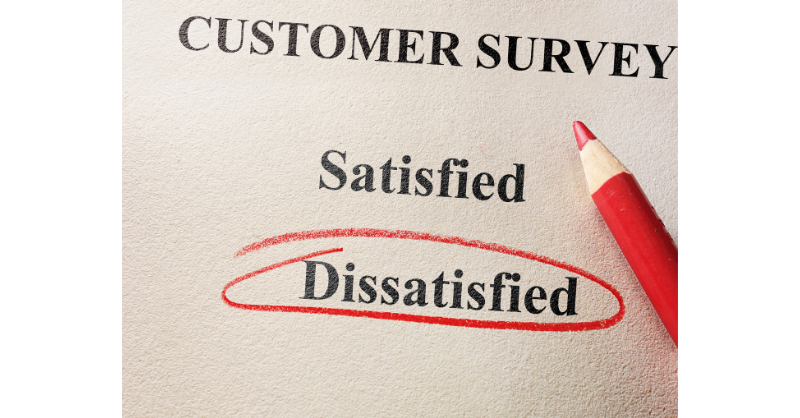
You can’t improve customer retention if you don’t know why customers leave. It’s popular to say that the biggest reason why customers leave is that they don’t feel like your business cares about them, but if you really dig into customer loyalty, you’ll see that customers leave for many reasons.
To get a handle on why customers leave, you have to understand the reasons behind it. If you think that customer loyalty is dead, then this post will show you exactly how wrong that idea is — and what drives customer loyalty in today’s business climate.
Why Customer Experience is Important
While businesses that are thriving and expanding can get new customers to replace lost consumers, few pay attention to why they leave in the first place. Every year, between 10% and 25% of an average business’s customer base leaves. Acquiring new customers is a costly, as quitting them can result in lost revenue and fees. This never-ending cycle of attracting customers costs nearly five times as much money compared with keeping their current clients.
Customer experience is one of the most important factors in business because it can affect your sales. If you have a customer service team that’s on point, customers will be more likely to return and make purchases. Studies show that if a customer’s issue is remedied during the first interaction with the business, 67% of them will stay with your business. For one customer experience agency, they found that loyal customers are more than five times as likely to repurchase, four times as likely to forgive a company for any mistakes they might make and seven times more open-minded when it comes down to new product offerings.
In the long run, increasing your customer retention rates by 5% can increase earnings up to 25%-95% that will benefit your business. The success rate of selling to an existing customer is 60-70%, while that of trying to get a new customer is about 5-20%. Focusing on getting your customers to repurchase from you and increasing their loyalty would be the most effective.
6 Reasons Your Customers Leave You
When you’re running a business, it’s important that your customers are happy. Here are some reasons why businesses lose their customers.
1. There is no way for your customers to stay in touch with you

High churn can be a sign of incomplete or non-existent communication with users. When this happens, they forget about your brand and you might seem less important to them than other brands that still reach out regularly through various media channels. You may want to remedy the situation by increasing communication so that customers not only remember you but perceive your company as more significant and relevant compared to competitors who are constantly on their radar.
It’s common for businesses to forget to consider whether the methods they’re using are actually productive. For example, phone calls or print communication may be valued more by people aged 55 and older, but millennials and Gen Z prefer text messages and social media. Your customer communications strategy must prioritize multi channel engagement as well as delivering communications and documents via the media that each customer prefers.
2. Your customers lose interest in your products or services

A small gym might have great branding and positioning to market their services. However, as the needs of customers change, they are more likely to leave because people migrate upmarket into other markets that provide better solutions for them. A few miles down there might be another larger facility that offers more options or better amenities for people who are looking to lose weight faster than they were able at this smaller location.
If a small gym isn’t able to adapt and evolve its services, it will lose out on loyal clientele who are looking for new experiences beyond what they can get at that location. Instead of focusing just on branding or positioning, businesses should be responsive as well so that when the market changes direction, they’re ready to meet those expectations.
3. They are unsatisfied with the customer experience

Customers will lose faith in your company if you don’t provide them with an exceptional customer experience. Customers become disappointed when they cannot access customer service links on a website, or do not receive help from companies to resolve issues right away. They may also believe the business is uninterested and untrustworthy if their problems are taking too long to be resolved as well.
Customer satisfaction is determined by employee happiness because it reflects the mood and state of your business. If your employees leave after a short time on the job, then there is no way that they will provide excellent customer service for long either. It is almost impossible to retain customers when your staff cannot be retained for a long time and customers can tell when employees are unhappy at work.
4. Your customers are unhappy with the price
Customers can be happy with your pricing and in the right market segment. Sometimes companies rely on price changes to solve problems that come from poor customer service or outdated products. If they’re not satisfied with a product that doesn’t solve their problems, then attempting to cut prices reduces your profit margins and makes price increases even harder in the future.
If their problem isn’t solved in any manner by your pricing, then they might abandon your product and look for something else instead like a competitor with better product and market fit who can provide value without requiring as much effort from users. The more you understand your target audience’s problems, the easier it is to create products and services that solve them.
5. Your business relies on older technology
Technology has become the driving force for brand loyalty. Long checkout times and lack of payment options can cause customers to lose patience, resulting in loss of business and reduced customer satisfaction. Customers today have high expectations but short attention spans. They also do not tolerate inefficient technology and processes that make it difficult to buy products and services on and offline.
6. Customers don’t think you see them as individuals
Customers are tired of keeping up with business and companies that don’t recognize them as individuals. They want to be recognized for their interests, not just seen as a nameless consumer who exists only to help the company produce profit.
If you truly want to understand how customers stay loyal, personalize your interactions more than ever before with a loyalty program. Loyalty programs are a great way to recognize and reward loyal customers. For example, you can issue them free products or services in return for frequent purchases.
How to Keep Your Customers’ Loyalty
Without a great customer experience, businesses risk losing repeat business and revenue to competitors. Using these tried-and-true strategies can help you retain the loyalty of your customers.
1. Offer a loyalty program

A loyalty program is a great way to make your customers feel special and important.There are several types of different programs that you can implement, including:
Points Program
People love point programs because they are easy to understand. Customers earn points for every purchase and then use them to exchange for a prize or special offer as their balance increases.
Time-Sensitive Promotions
Another efficient way to boost the success of your loyalty program is to periodically send out time-sensitive promotions. You might offer customers who come in on a weekend and buy one cup of coffee, you will double their reward points for their next visit. You can double the impact of your promotion by tying in a loyalty rewards program.
Tiered Program
Offer customers different rewards for their different spending habits by creating a tiered rewards program. The longer they are with your company, the more benefits they will receive. This will make them feel involved and rewarded.
VIP program
You can provide VIP memberships that offer special deals and perks in exchange for an annual or monthly fee. The company should offer top-tier loyalty benefits such as discounts on future products to customers who enroll.
By setting up a reward system for the most loyal, you not only encourage them to stick around, but you also give an incentive for other customers to strive to reach that status.
2. Keep in touch with your customers regularly

Staying in touch regularly with customers ensures that you are aware of their concerns before they escalate. It’s also important to stay in touch and keep on top of your customers’ minds.
Regular in-person conversations and email surveys can provide useful information, but you can use other technology to engage your customers. Before you jump on every platform with your customers, consider what platforms are best suited to them.
Brands can’t neglect email marketing in today’s digital age. Email newsletters are popular, and it remains a useful customer service tool for businesses that aren’t as active on social media or prefer to submit queries through other channels.
Social media
Brands should respond directly to social media mentions, even if the mention is negative. Prompt customer service will establish your brand as trustworthy in the eyes of customers. Don’t forget to share updates on Facebook, Instagram, and Twitter so they will not miss out on product updates and company news.
Website
You should set up your website so that it’s functional on desktops and mobile devices and is easy to navigate for customers. Make the checkout process easier with popular payment options.
Implementing live webchat on your website is great for both customers and customer care representatives. A lot of the common questions people ask can be answered through chat, so it saves time to devote more attention to detailed questions that need answers.
3. Seek out customer feedback
To improve customer service, you should solicit feedback from customers by surveying them and asking questions during phone calls. Online reviews, comments, or tags on social media and other online forums can be used to address both positive and negative client feedback to demonstrate you engage with all customers.
You may want to have a private message or email after receiving negative feedback on social media. If you received positive feedback, you can ask the customers if you can feature their feedback online through your website or social media accounts. Don’t forget to always thank your customers for their positive support.
4. Watch your competitors and industry
If you are in an industry where your competition is constantly updating their products and services, it can be important to keep up with them. If they offer training programs for employees about what makes a good customer experience, this will give you insight into how to improve upon the experiences of customers who use your business.
You can also learn more about their products and services through their marketing campaigns, which reduces the likelihood of your customers joining their list of satisfied customers.
5. Improve the customer experience culture of your business

You need to start from within your company to create a better customer experience. Employees are more likely to treat customers with respect if they feel their company values them. They will also be happier if you give them autonomy over their work, which will make it easier for them to work together with customers.
You can ensure consistent customer service by offering incentives like bonuses to sales staff and training to your employees. Guidelines and policies can be helpful for maintaining consistent service levels throughout your company, but you should also empower staff members to resolve customer issues on their own without having to always go to management when necessary.
Now is the Time to Invest in Customer Loyalty
These 6 reasons are enough to leave you convinced that it’s time for a great client experience.Today, there are many ways to provide an amazing client experience. If you follow these guidelines, your consumers will have a great and memorable experience that can develop into loyalty for your business. Making a good first impression is important because it sets the tone on how things will go later in the relationship with customers of any company.

















No comment yet, add your voice below!